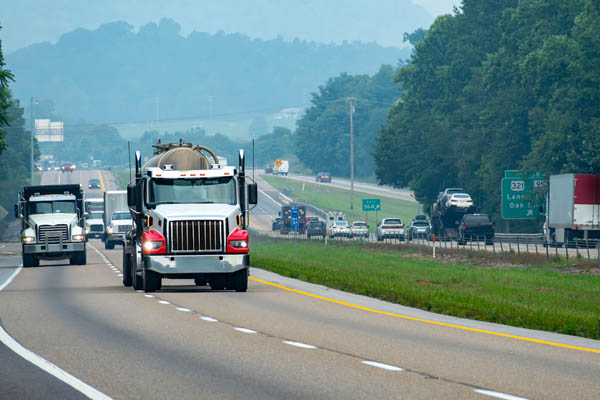Distinguishing Between On-Road & Off-Road Diesel: Understanding the Differences

Diesel fuel, renowned for its diverse applications, is characterized by excellent compression properties. This feature enables it to power internal combustion engines efficiently that ignite fuel without requiring a spark. The sources of diesel are quite varied, encompassing both petroleum-based and biomass-derived processes. To maintain both quality and environmental responsibility, numerous regions have established standards for diesel fuel. Additionally, it’s crucial to recognize the distinctions between diesel used for on-road and off-road purposes to ensure proper utilization and adhere to legal requirements. This article explores the nuances of on-road vs off-road diesel, delving into their similarities and differences.
On-Road Vs. Off-Road Diesel: Uncovering Their Distinct Characteristics
Contents
Continue reading to uncover the critical distinctions between these two types of diesel.
Defining On-Road Diesel

True to its name, on-road diesel is designated for vehicles operating on public roadways. Primarily used in the transportation sector, it is a clear liquid readily available at fuel stations across the globe. Often referred to as “green diesel,” this term doesn’t indicate any added coloration but instead emphasizes the fuel’s renewable and environmentally conscious attributes.
Drivers can gauge the age and quality of on-road diesel by its appearance. A vibrant, clear appearance is a reliable indicator of fresh, well-conditioned fuel. In contrast, aged on-road diesel often leads to reduced performance and various other complications. It’s essential to identify suppliers who consistently deliver high-quality diesel.
Understanding Off-Road Diesel

Off-road diesel is primarily utilized in agricultural, industrial, and construction contexts. It’s the driving force behind machinery on farms, within factories, and at construction sites, enhancing both productivity and efficiency. While these environments may include vehicles, they are restricted to the premises and do not traverse public roads.
In residential settings, off-road diesel often serves as a heating fuel during colder months. Specific federal and state regulations govern the use and taxation of this fuel type. To distinguish off-road diesel from its on-road counterpart, refineries incorporate red dyes, specifically Solvent Red 26 and 164. These dyes are designed to be identifiable even in minimal concentrations.
On-Road and Off-Road Diesel: The Similarities
On-road and off-road diesel share more commonalities than differences. Chemically, these two fuel types are essentially the same. This means they can be interchanged in any diesel engine with comparable outcomes. For instance, agricultural or industrial operations could temporarily use on-road diesel in their machinery if their supply of off-road diesel depletes. However, they would likely revert to off-road diesel at the earliest convenience for cost efficiency.
This principle also applies in reverse. Theoretically, vehicles can operate using off-road diesel. Yet, this practice is generally discouraged because it breaches regulatory guidelines. Motorists must adhere to legal standards to avoid complications. Law enforcement agencies are vigilant and can levy penalties on individuals found utilizing red diesel in applications where it is not permitted.
Distinguishing Off-Road from On-Road Diesel
Taxation Factors

A primary distinction between these diesel types is their taxation. On-road diesel typically incurs higher taxes, with the collected revenue allocated towards the upkeep and development of highways and related infrastructure. This taxation reflects the rationale that vehicles using public roads contribute to their deterioration. Hence, through these taxes, drivers indirectly finance the sustainability of road infrastructure.
While the federal tax on diesel remains consistent across the United States, state-level taxation can vary significantly based on local legislation. Different states may choose to levy taxes either on the volume of fuel purchased or on the total expenditure on the fuel. Off-road diesel is exempt from these taxes due to its distinct usage in non-transportation sectors.
Price
A key reason some might consider using off-road diesel in vehicles is its lower cost compared to on-road diesel. The absence of extra taxes on off-road diesel can result in price differences of up to 25 cents per gallon. For individuals who frequently refuel for long-distance journeys, this price gap might seem like an opportunity for substantial savings. Nevertheless, the risk of incurring heavy fines serves as a deterrent against such practices, emphasizing that the short-term cost benefits do not justify the long-term risks.
Color

Given the identical chemical makeup of on-road and off-road diesel, authorities rely on color coding as a straightforward method to differentiate between them. The distinct coloring of each fuel type allows for immediate identification, enabling law enforcement or inspection officers to quickly ascertain the contents of a tank with just a glance.
If there’s suspicion of irregular fuel usage, authorities have the right to stop motorists for inspection. They might take a small sample of the fuel or check the color through the fuel filter. For on-road diesel, the expected color is clear. However, if a vehicle is found using red diesel, the driver could face substantial penalties, potentially up to $10,000. Adhere to fuel regulations to avoid such legal and financial inconveniences.
Usage
The application of off-road diesel is legally confined to specific sectors. In construction, it’s essential for powering a range of heavy machinery such as cranes, loaders, rollers, compactors, earth movers, backhoes, excavators, trenchers, forklifts, and scrapers. In the agricultural sector, it runs tractors, harvesters, irrigation pumps, and other vital farm equipment. This specialization enhances efficiency and productivity, contributing significantly to revenue growth in these industries.
Some jurisdictions permit the use of off-road diesel in vehicles operating solely on private property. Conversely, on-road diesel is primarily used in vehicles like cars, SUVs, and small trucks, which are frequent users of public roads and highways.
Distribution
The distribution of on-road diesel is designed for maximum accessibility to drivers. Motorists can easily refuel their vehicles at numerous fuel stations situated conveniently along roadsides. This widespread availability and the convenience it offers help balance the higher cost. Additionally, long-haul truckers possessing a valid tax exemption certificate have the option to procure tax-exempt green diesel at designated pumping stations in certain states.
In contrast, off-road diesel typically reaches its users through bulk sales by specialized fuel distributors, such as Lawes Company. Farms, construction sites, and industrial businesses often arrange for deliveries directly to their premises by truck. To facilitate ease of use, many of these locations maintain onsite storage tanks. While a limited number of rural gas stations might offer off-road diesel, these are relatively uncommon. Users should establish arrangements with reputable fuel companies, ensuring a steady and uninterrupted supply.
Conclusion
Diesel fuel, known for its efficiency and cost-effectiveness, is widely used in various sectors. To streamline taxation and regulation, governments categorize diesel into two types: on-road and off-road. On-road diesel, necessary for vehicles using public infrastructure, is readily available at fuel stations, albeit at a higher price due to taxes supporting road maintenance.
Conversely, off-road diesel, mainly used in agricultural and construction equipment, is less expensive and is distinguished by a red dye added as a visual identifier. This distinction enables authorities to monitor its distribution and prevent illegal usage effectively. For those requiring off-road diesel, it’s advisable to contact a reputable local fuel provider, like Lawes Company, to ensure a reliable and consistent supply.
Call Lawes Company For Fast & Reliable Oil Deliveries
Lawes Company offers trusted and affordable heating oil deliveries. Our name is well-known for honest heating oil prices and skilled services. Not only that, but we also offer a full line of HVAC services which also enhance efficiency and comfort.
Be sure to ask about our different heating oil plans and financing options. By working with us, you can customize your fuel deliveries to meet your needs. Contact Lawes Company today to ask for more information or request service.
Contact us now at (732) 741-6300 to find out more! Click the link to view our service area.

Related Articles: